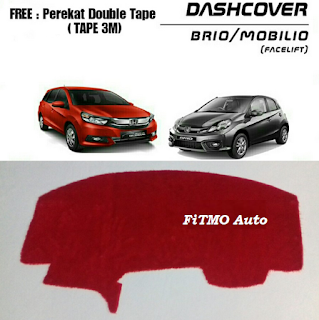The Porsche Panamera is the marque's first-ever four-door sedan. Aimed at the Audi A8, BMW M5 and 7 Series, Maserati Quattroporte, and Mercedes-Benz S Class, this grand tourer is somewhat different. Instead of a traditional three-box sedan shape, the Panamera is a two-box hatchback to provide a roomy rear seat and useful cargo space.
And it is truly roomy, with back-seat headroom, legroom and hip room that rivals that of a Mercedes S-Class sedan or any of the other cars in this class. This surprised us. The other thing that surprised us was its refinement and smoothness. It's impressively smooth and serene when cruising along like a luxury car, which belies the world-class handling and performance available whenever the driver starts pushing hard on the pedals.
Beyond having four doors, the Panamara is different from traditional Porsches. Unlike the 911, which has its engine mounted in the rear, the Panamera has a more common front-engine design. It is offered with two flavors of V8 power. Panamera S and Panamera 4S models use a 400-horsepower V8, while the Panamera Turbo model features a 500-horsepower turbocharged version of the same engine. Both engines are mated to a new seven-speed automated manual transmission Porsche refers to as the PDK.
The Panamera S comes with rear-wheel drive, while the 4S and Turbo have all-wheel drive.
All Panameras are fast. The normally aspirated V8 in S and 4S models has plenty of power at any speed, and can launch the car from 0-60 mph in as little as 4.6 seconds. The Turbo cuts that time to 3.6 seconds, with little if any turbo lag and a rush of power that pins you back in your seat. Those numbers don't tell the whole story, however. The Panamera S feels lighter on its feet than the Turbo, and is in some ways more entertaining to drive. The 4S falls between the two.
Slightly smaller than a BMW 7 Series, the Panamera offers the sporty performance of a world-class sports sedan with the comfortable ride and refinement of a luxo-cruiser. A lot of engineering went into the car to make those extremes possible. To achieve the desired balance, Porsche built the body from lightweight materials and placed the engine low and as far back as possible. Porsche also used two forms of adjustable suspension to turn the ride from soft but stable to racetrack-ready.
The most luxurious Porsche ever, the Panamera is quite well appointed and equipped. Leather upholstery is standard, as are a choice of carbon, aluminum or five varieties of wood trim. The fit and finish and quality of the materials rival that of any competitor.
Space is impressive, too. A standard full-length center console divides the car into four distinct and comfortable seating positions. The feel from the driver's seat is much like that of the 911, only higher off the ground. The rear seat has enough head room for an NBA point guard and plenty of leg room, too. All of the seats are supportive without being too firm or too deeply bolstered. With this much room, the Panamera would work just as well as a chauffer-driven vehicle as it would a driver-oriented sports sedan.
The hatchback design makes the Panamera useful as a family vehicle, too. With the rear seats up, the rear cargo area is as roomy as most trunks, and with the seats down the Panamera has as much cargo room as a Subaru Impreza hatchback, which is a lot.
Bottom line, the Porsche Panamera is a great way to expand the Porsche lineup. It performs well on the street and the track, and offers enough passenger and cargo room to make it a no-compromise luxury sedan. Put simply, the Panamera enters the market as one of the world's best luxury sports sedans. Be careful with options, though. As with any Porsche, they can get awfully pricey when you start checking off the boxes.
And it is truly roomy, with back-seat headroom, legroom and hip room that rivals that of a Mercedes S-Class sedan or any of the other cars in this class. This surprised us. The other thing that surprised us was its refinement and smoothness. It's impressively smooth and serene when cruising along like a luxury car, which belies the world-class handling and performance available whenever the driver starts pushing hard on the pedals.
Beyond having four doors, the Panamara is different from traditional Porsches. Unlike the 911, which has its engine mounted in the rear, the Panamera has a more common front-engine design. It is offered with two flavors of V8 power. Panamera S and Panamera 4S models use a 400-horsepower V8, while the Panamera Turbo model features a 500-horsepower turbocharged version of the same engine. Both engines are mated to a new seven-speed automated manual transmission Porsche refers to as the PDK.
The Panamera S comes with rear-wheel drive, while the 4S and Turbo have all-wheel drive.
All Panameras are fast. The normally aspirated V8 in S and 4S models has plenty of power at any speed, and can launch the car from 0-60 mph in as little as 4.6 seconds. The Turbo cuts that time to 3.6 seconds, with little if any turbo lag and a rush of power that pins you back in your seat. Those numbers don't tell the whole story, however. The Panamera S feels lighter on its feet than the Turbo, and is in some ways more entertaining to drive. The 4S falls between the two.
Slightly smaller than a BMW 7 Series, the Panamera offers the sporty performance of a world-class sports sedan with the comfortable ride and refinement of a luxo-cruiser. A lot of engineering went into the car to make those extremes possible. To achieve the desired balance, Porsche built the body from lightweight materials and placed the engine low and as far back as possible. Porsche also used two forms of adjustable suspension to turn the ride from soft but stable to racetrack-ready.
The most luxurious Porsche ever, the Panamera is quite well appointed and equipped. Leather upholstery is standard, as are a choice of carbon, aluminum or five varieties of wood trim. The fit and finish and quality of the materials rival that of any competitor.
Space is impressive, too. A standard full-length center console divides the car into four distinct and comfortable seating positions. The feel from the driver's seat is much like that of the 911, only higher off the ground. The rear seat has enough head room for an NBA point guard and plenty of leg room, too. All of the seats are supportive without being too firm or too deeply bolstered. With this much room, the Panamera would work just as well as a chauffer-driven vehicle as it would a driver-oriented sports sedan.
The hatchback design makes the Panamera useful as a family vehicle, too. With the rear seats up, the rear cargo area is as roomy as most trunks, and with the seats down the Panamera has as much cargo room as a Subaru Impreza hatchback, which is a lot.
Bottom line, the Porsche Panamera is a great way to expand the Porsche lineup. It performs well on the street and the track, and offers enough passenger and cargo room to make it a no-compromise luxury sedan. Put simply, the Panamera enters the market as one of the world's best luxury sports sedans. Be careful with options, though. As with any Porsche, they can get awfully pricey when you start checking off the boxes.
 RSS Feed
RSS Feed Twitter
Twitter






 Thursday, February 24, 2011
Thursday, February 24, 2011
 Samipodo
Samipodo

0 komentar:
Post a Comment